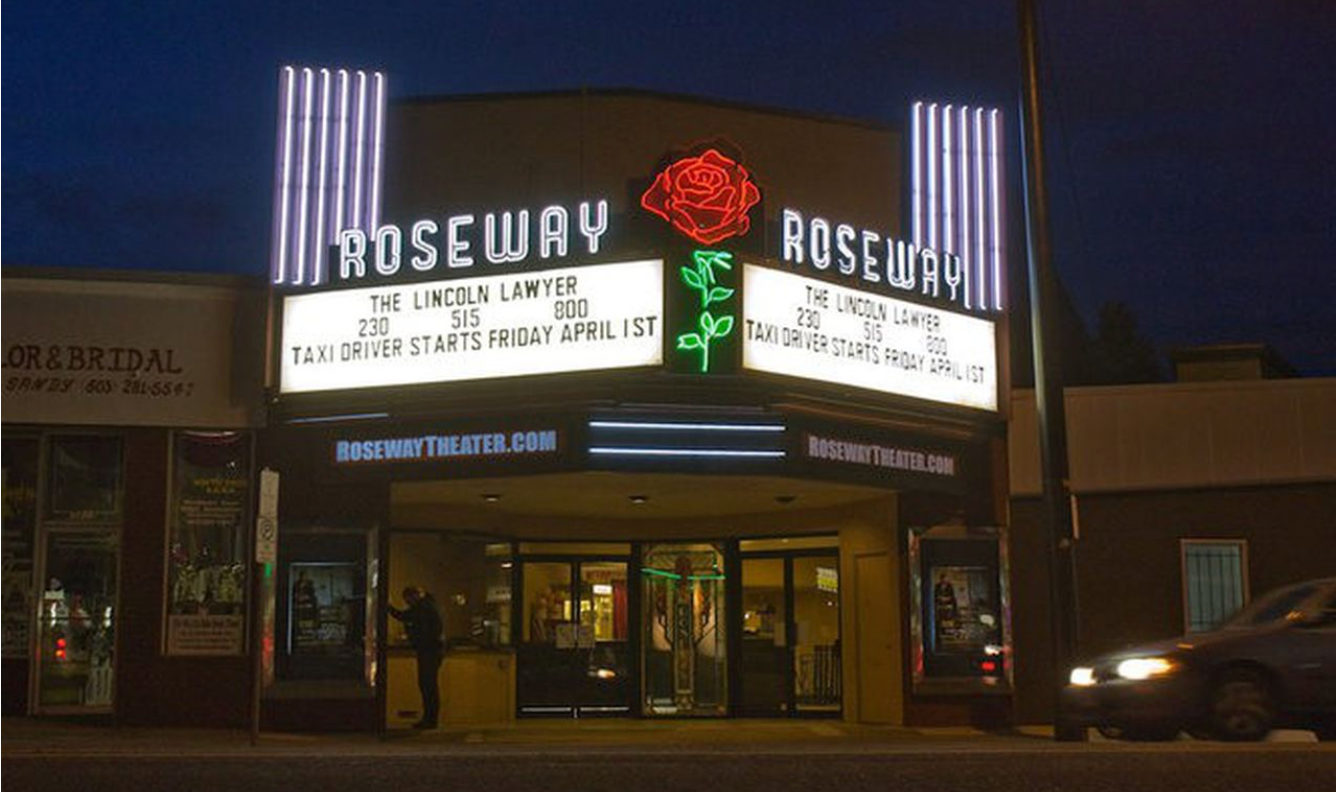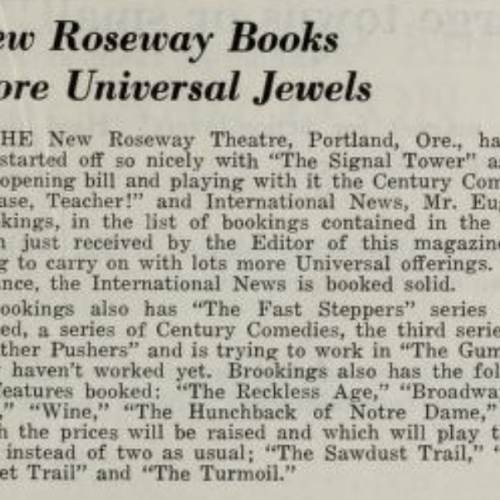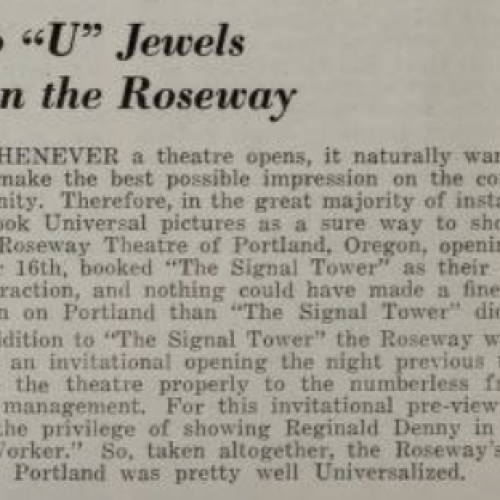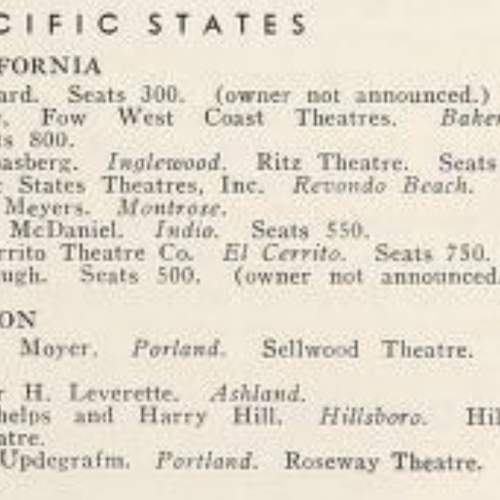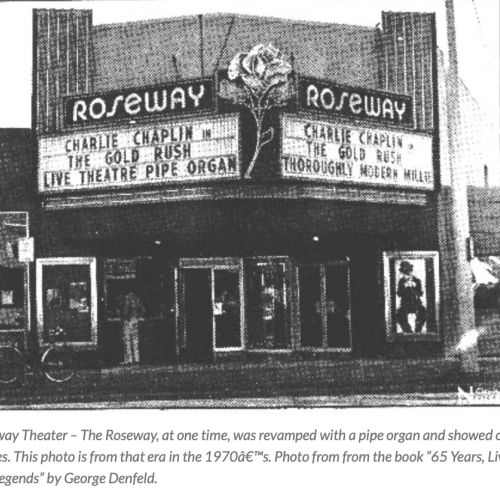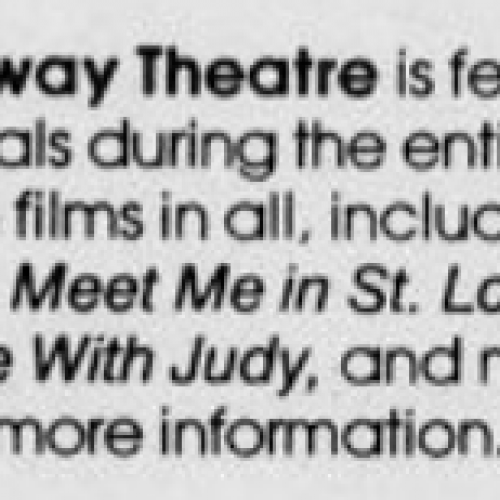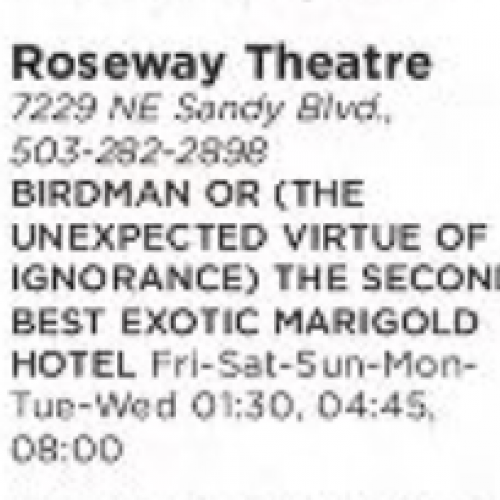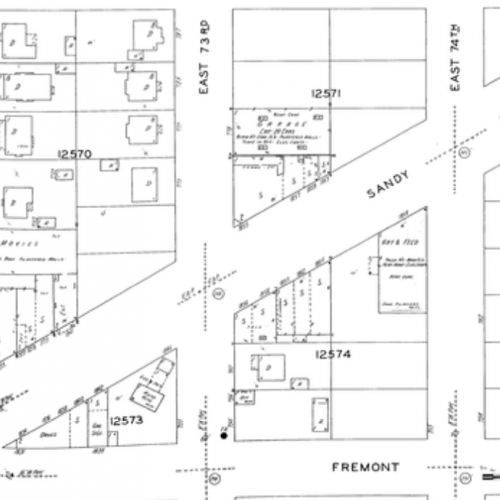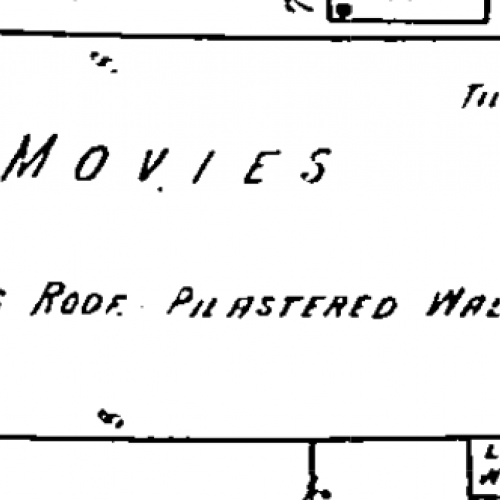The theater was originally opened by H.J. Updegraff as an independent and family-owned movie theater. It initially had 640 seats with a main level and a balcony for patrons. This made it one of the city's larger neighborhood movie houses in the 1920s sitting on the corner of 72nd street and Sandy Blvd, where the theater still operates today.
The Roseway Theater opened in the later months of 1924, and in its opening bill it featured The Signal Tower starring Virginia Valli and Rockliffe Fellowes. It also showed Please, Teacher! featuring Buddy Messinger and Martha Sleeper. Along with the public opening day, the Roseway also help an invitational opening where they played The Fast Worker starring Reginald Denny. All in all, the opening of the Roseway was reviewed as being Universalized and off to a good start by impressing Portland audiences.
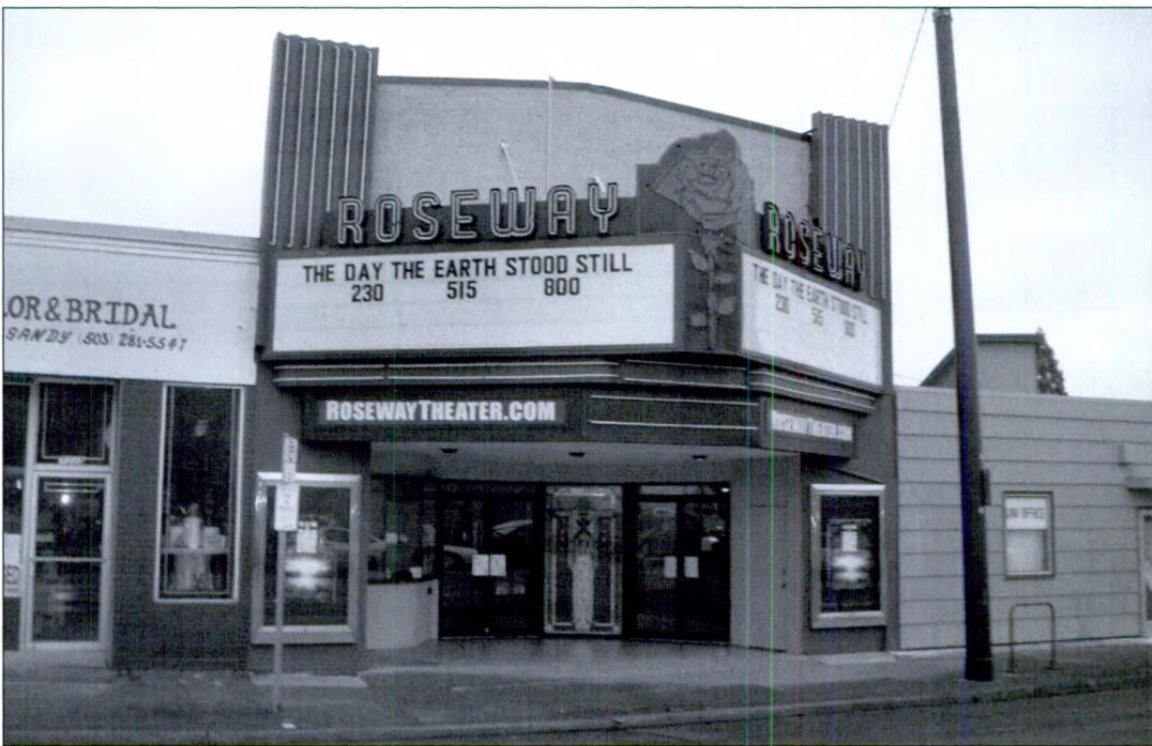
For a theater to last as long as the Roseway has it has to constantly be changing with the times. In 1926 the theater did just that by installing a 2/5 Smith theater organ according to the Puget Sound Pipeline. The original organ was in the theatre until 1953, when it was removed during the time a Cinemascope screen was being installed. Another organ would be put into the theater in the 1980s. That was a 3/8 Robert Morton. The organs allowed for sound to accompany films, and, specifically in the 1920s, this added life to silent films.
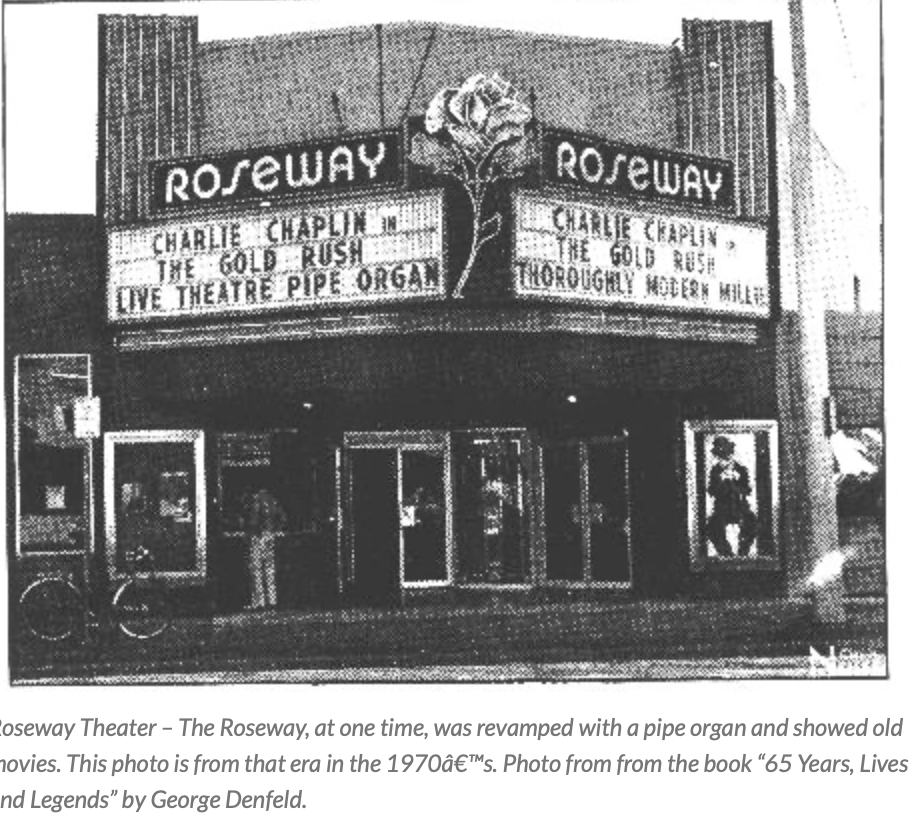
Organs weren't the only thing changing throughout the theater's lifetime though. It also saw many managerial changes. In 1927, Updegraff sold the lease on the Roseway to West Coast Theatres. He continued to work there, but the company allowed him more leeway and financial support. In 1929, Updegraff reported a projection room fire that ruined two reels of film and a $800 robbery, but the theater survived to see more owners. On January 2, 1939, Updegraff passed away, and the theater was bought by Jesse E. Jones and was managed by the likes of Jack Beattie, formerly of Medford, and then, in the 1950s, Orville Goodrich was the new manager. He installed wide screen equipment in the theater which was one small portion of the renovations done to the theater during the 50s. After Goodrich was drafted, Al Meyers and Al Fourmet both had their shot at managing too.
The Roseway continued to be successful and stay in business into the early 21st century when, in 2008, it gained a new owner, Greg Wood, and the theater underwent another renovation. During this renovation many of the original art deco touches on the theater were restored. There was also an upgrade to nicer seating allowing patrons to be more comfortable and have more leg room. This upgrade resulted in reduced seating in the theater, the Roseway now seats 330 compared to the original 640. The technology was the biggest upgrade during this renovation. It installed a state-of-the-art digital sound and projection unit, and many claim that the Roseway's sound is unbeatable and even has corporate multiplexes beat. This also allowed the theater to start screening 3D movies, setting it apart from other independent theaters, and truly putting the Roseway into a league of its own.
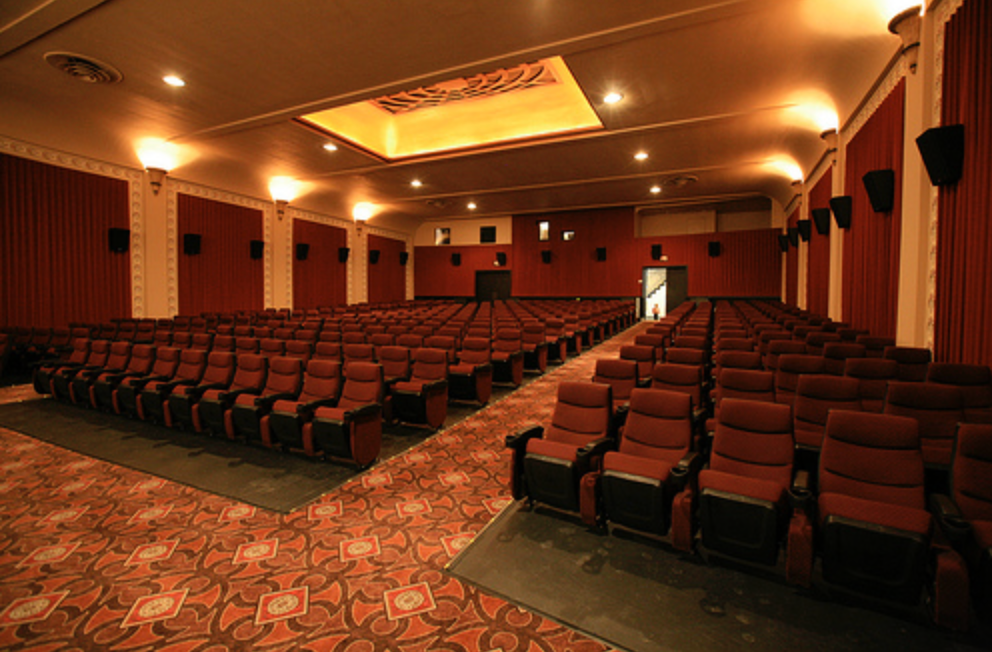
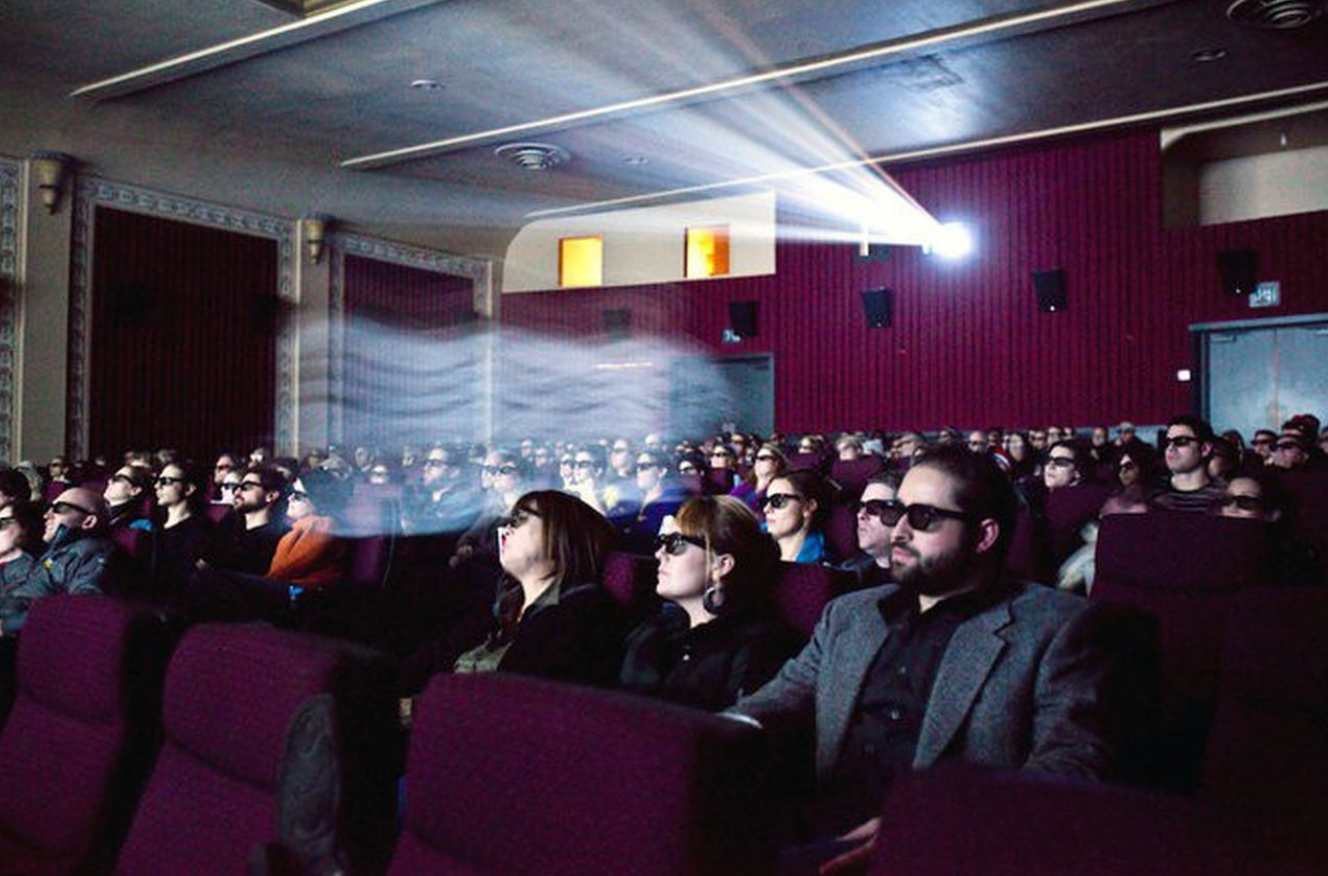
The Roseway got into some hot water in 2019, and the theater and the owner, Greg Wood, were sued by the city of Portland for unpaid taxes. According to The Oregonian the movie house hadn't paid local business taxes for seven years, and they owed the state more than $21,000. There was never much follow-up after the lawsuit was followed but considering the theater is still running and proving to be a success it is assumed that matters were settled.
Today the Roseway continues to show popular films that are shown in mainstream movie theaters, but it also retains its distinctive neighborhood comfort and the intricacies that made it popular over 90 years ago. The original 1920s facade and interior remain intact and as a sight to see for many. With the addition of top tier sound and projection it's no wonder that the Roseway has survived and thrived as long as it has. The Oregon Historical Society puts it best when they say, "Photographs of the theater from the 1920s to the 1940s adorn lobby walls, testifying to its lasting impact on the surrounding community."
